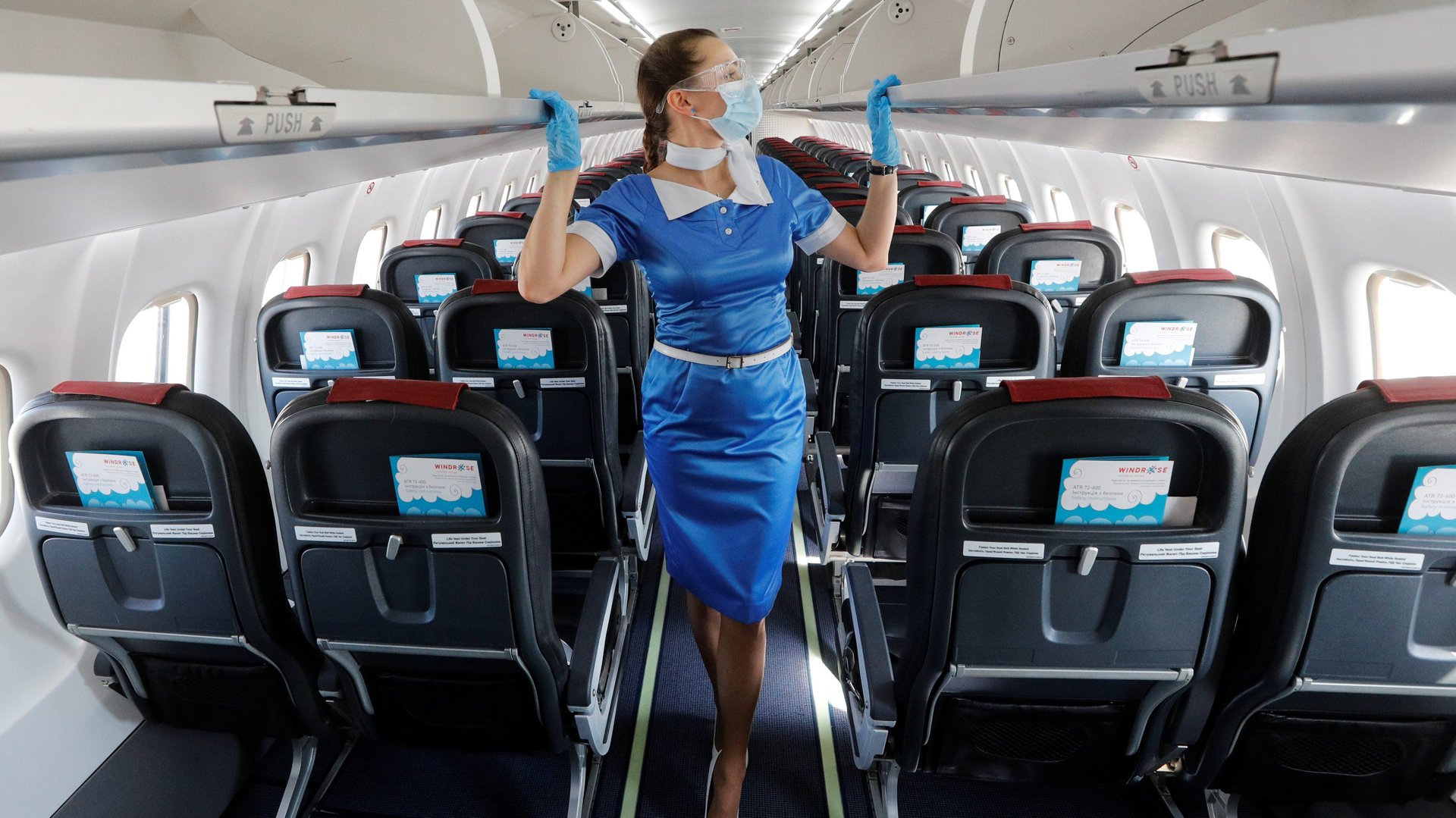Airlines are off the hook for up to 200 million metric tons of carbon emissions
2020 was supposed to be a pivotal year for the airline industry’s carbon footprint. Instead, the industry is getting let off the hook for up to 200 million metric tons of CO2 emissions.


2020 was supposed to be a pivotal year for the airline industry’s carbon footprint. Instead, the industry is getting let off the hook for up to 200 million metric tons of CO2 emissions.
Let’s back up: Aviation is notoriously tricky to decarbonize. New commercial planes are getting more efficient, but not enough to offset growth in passengers (pre-pandemic, anyway), and they’re still a long way from running on batteries or anything other than jet fuel. Although air travel’s footprint is relatively small—around 2.4% of total global emissions—it’s growing quickly, up 10% between 2013 and 2019.
In 2016, the United Nations agency that regulates international air travel, with the support of industry trade groups, adopted a plan to curb emissions. Starting in 2021, companies would be required to purchase carbon offsets for any emissions from international flights that exceed a baseline of their 2019-2020 average (domestic flights, which account for 35% of total aviation emissions, aren’t included in the plan).
At the time, that seemed like a reasonable starting point. No one could have predicted that 2020 would see the most precipitous traffic drop-off in the industry’s history: Airlines are expected to lose $84.3 billion this year, according to the International Air Transport Association, with bookings down 82% compared to this time last year.
Suddenly, that starting point looked more aggressive. And so, in April, IATA asked the UN agency, the International Civil Aviation Organization, to give it a break, and allow companies to count 2019 alone as the offset baseline. Finally, on June 30, the agency agreed. For at least the first three years of the program, no offsets will be required for emissions that don’t exceed 2019 levels (the agency will meet again in 2022 to re-assess the standard).
It’s tricky to predict the exact carbon impact of this decision, since it depends on how quickly global air travel resumes post-pandemic. But according to Dan Rutherford, director of shipping and transportation at the International Council on Clean Transportation, the higher baseline and exclusion of domestic travel means that about 90% of total global aviation emissions won’t be covered.
Depending on the speed of recovery—which will likely be helped along by the more than $85 billion in bailout funding governments have directed to airlines worldwide—50 to 200 million metric tons of CO2 now won’t be offset, Rutherford said. “It takes a system which was not particularly ambitious in the first place and waters it down further.”
The baseline change wasn’t really necessary, even if you felt sympathetic toward airlines, said Annie Petsonk, an international affairs lawyer with the Environmental Defense Fund who helped develop the guidelines. The original plan contained a buffer provision that airlines could tap to lower their obligations during the first three years if they felt unaffordable, she said.
Not only will the change increase current aviation emissions, it could make them more difficult to decrease in the future. Shifting the goalposts adds an additional layer of uncertainty to the nascent market for aviation offset credits and alternative fuels, said Petsonk: “When you make arbitrary changes, investors get spooked.”